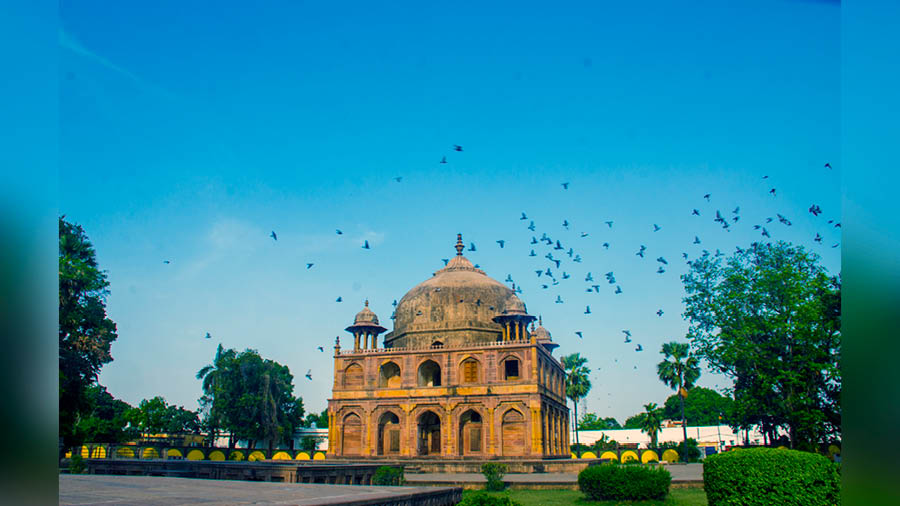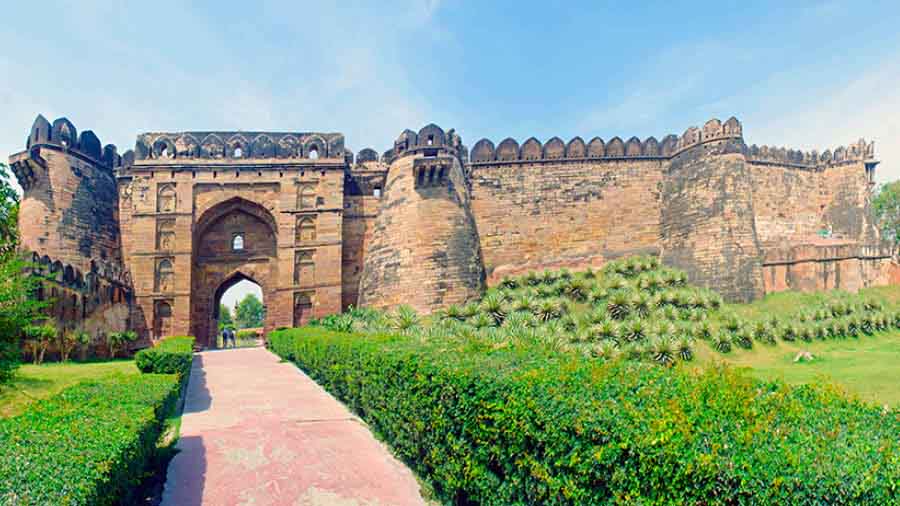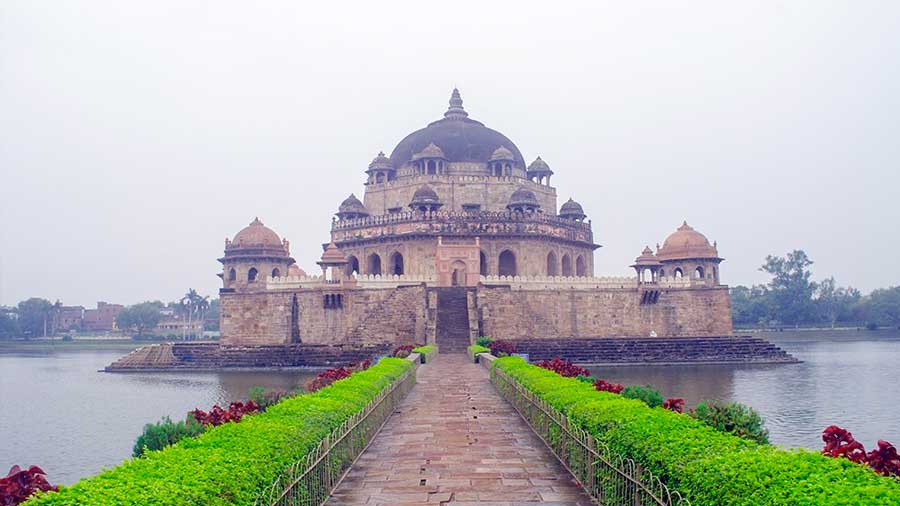Akbar, the greatest of all Mughals, was never pleased with his eldest son Salim (later known as Jahangir). Akbar didn’t like his carefree lifestyle and rebellious attitude, and never wanted him as his successor. Akbar wanted Khusrau Mirza, the eldest son of Salim to succeed him. But it was not meant to be. After Akbar’s death in 1605, Salim ascended the throne and came to be known as Jahangir.
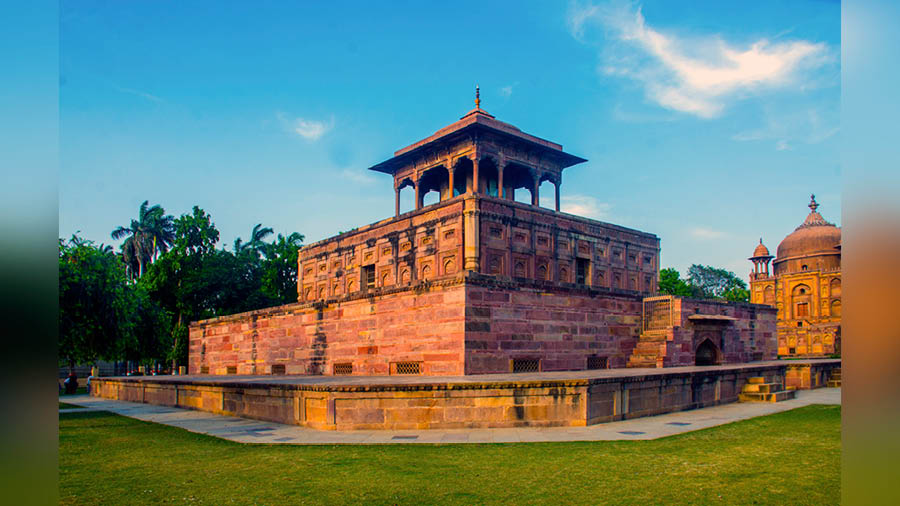
Shah Begum’s Tomb
Khusrau Mirza was born in 1587 and his mother was Shah Begum, who was a Rajput princess, born as Manbhawati Bai. She also happened to be the sister of Raja Man Singh, the trusted general of Akbar. Unable to tolerate the conflict between her husband and son, she died by suicide in 1605 by taking an overdose of opium. Jahangir built a magnificent tomb in her honour, in Allahabad (now Prayagraj). The tomb was designed by Aqa Reza, the principal artist at the Allahabad court. The calligraphy on the tomb was executed by Mir Abdullah Mushkin Qalam, Jahangir’s favourite calligrapher.
The tomb stands at the centre of a grand garden, now known as Khusro Bagh, just 6 km from Akbar’s Fort, which towers above the Triveni Sangam of Prayagraj.
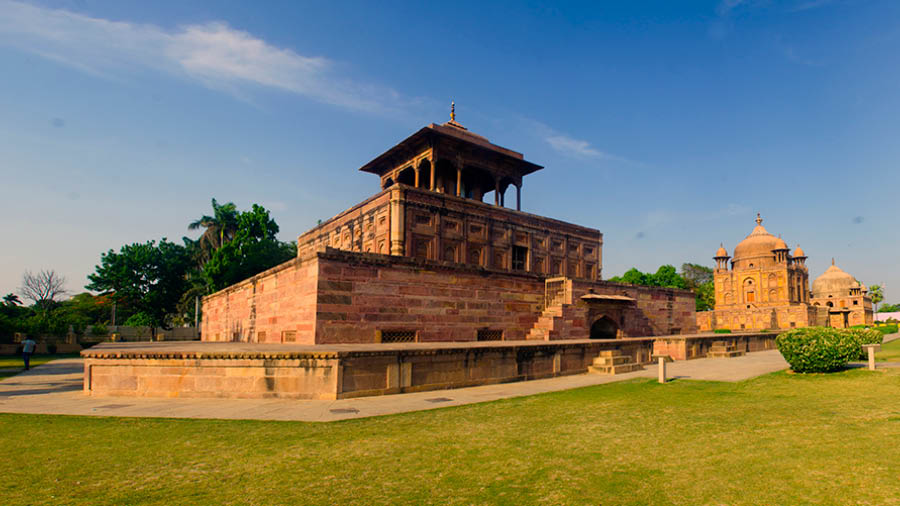
Panoramic view of Khusro Bagh, (L-R) Shah Begum’s Tomb, Nisar Begum's Tomb and Khusrau Mirza’s Tomb
On the other hand, Khusrau was not happy with his father ascending the throne and rebelled against him, but the rebellion was suppressed and Khusrau was taken prisoner and blinded (although partially). However, the partially blind Khusrau was still a threat, so Khurram (later Shah Jahan) had him executed in 1622. He was laid to rest in a magnificent tomb next to the tomb of his mother. Khusrau’s tomb was probably commissioned by his sister Sultan-un-Nissa (popularly known as Nisar Begum). Sandwiched between the Shah Begum’s tomb and Khusrau’s tomb is the tomb of Nisar Begum. It is the most elaborate tomb in the entire complex. It was constructed by Nisar Begum herself in 1624-25. She died in 1646 but was not laid to rest in the tomb she constructed.
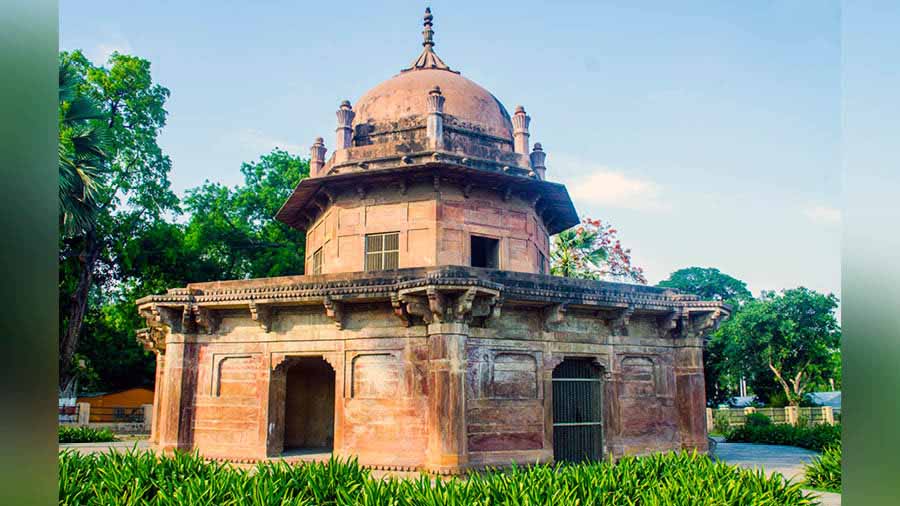
Tamolon Bibi’s Tomb
The fourth tomb of the complex lies at the western end of Khusro Bagh and is locally known as the Bibi Tamolon’s tomb. Sadly, nothing much is known about its occupant and history.
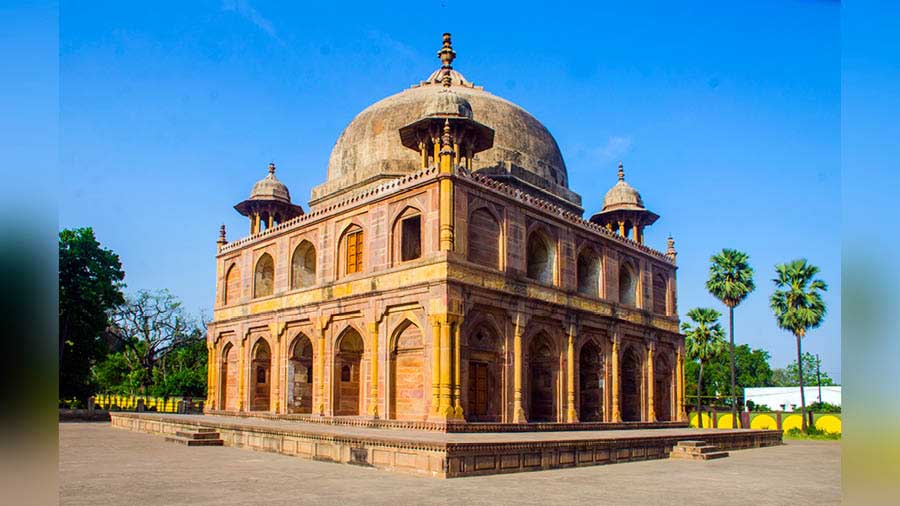
Khusrau Mirza’s Tomb
Today, Khusro Bagh is a large open green space located just south of the Prayagraj Junction Railway Station. It is a Mughal styled char-bagh garden — complete with fountains and water channels (now dried up) along with mango and guava trees and not to mention the four spectacular sandstone tombs from the Mughal era. It is protected by the Archaeology Survey of India (ASI) and also doubles as a recreational place for the locals, who come for morning and evening walks.
The tombs of Khusro Bagh

Nisar Begum's Tomb
At the centre of the garden lies the tomb of Shah Begum. Standing on an octagonal plinth, the two-storied structure is topped with a square chhatri supported by 12 pillars. This tomb has minimum ornamentation apart from a few recessed arches and jali windows. To the east of the Shah Begum’s Tomb lies the ornate tomb of Nisar Begum. Architecturally the most elaborate of all tombs in Khusro Bagh, it stands on an elevated square plinth and is crowned with a massive dome, flanked by four chhatris on four corners. It has elaborate ornamentation work with decorative battlements, intricate jali windows and elaborate arches.
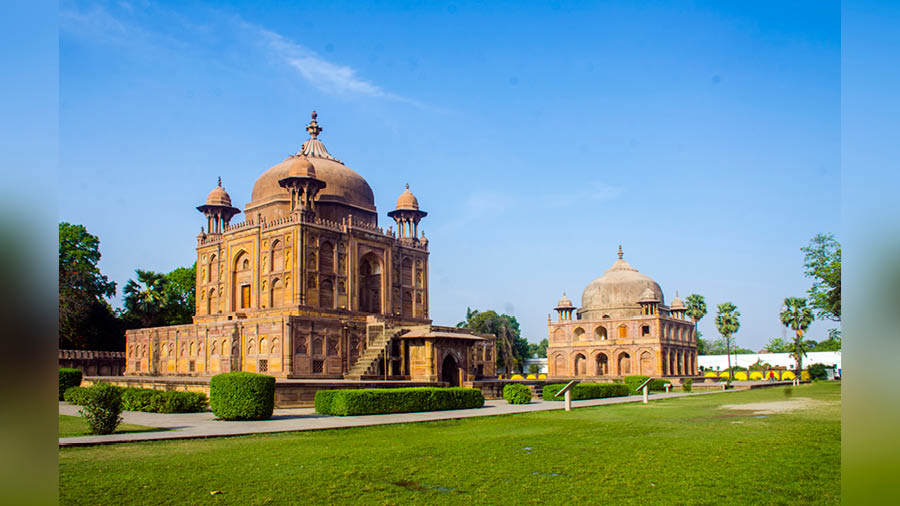
Nisar Begum's Tomb and Khusrau Mirza’s Tomb
Last in the line is the tomb of Khusrau Mirza. This, too, stands on a square plinth and is crowned with a massive dome. The dome is flanked by four chhatris and slender minarets mark the four corners of the structure. This also has a share of battlements, jali windows and recessed arches giving it an elegant look. There are two ornate fountains in between the three tombs.
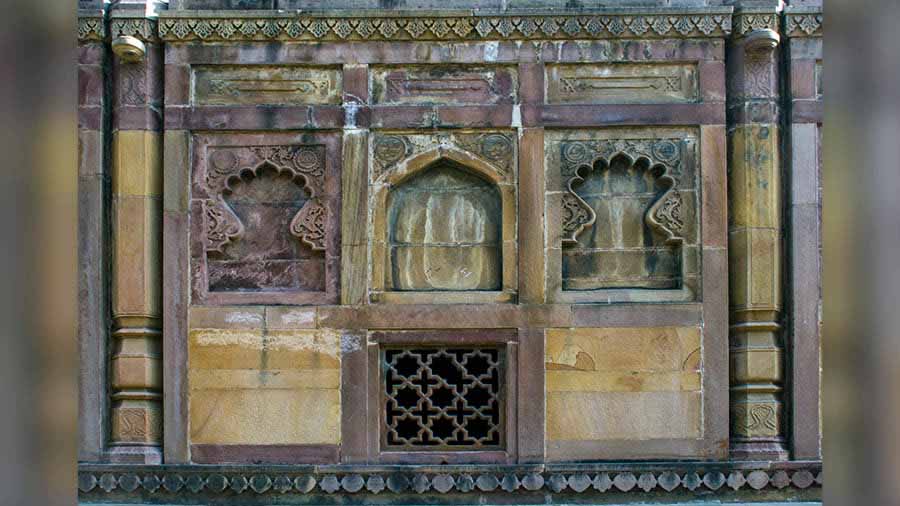
Elaborate ornamentation on the walls of Nisar Begum's Tomb
The fourth and final structure of Khusro Bagh lies further west of Shah Begum’s Tomb and all the four structures lie in a perfect east-west alignment. Bibi Tamolon’s Tomb is an octagonal two-tiered structure topped with a dome flanked with eight slender minarets. It has minimal ornamentations apart from decorative brackets. The complex also houses a grand gateway on the south side and provides access to the Yamuna River. This gate was probably more in use in the medieval days as the river provided easy transport. Sadly, the gate is heavily encroached upon today.
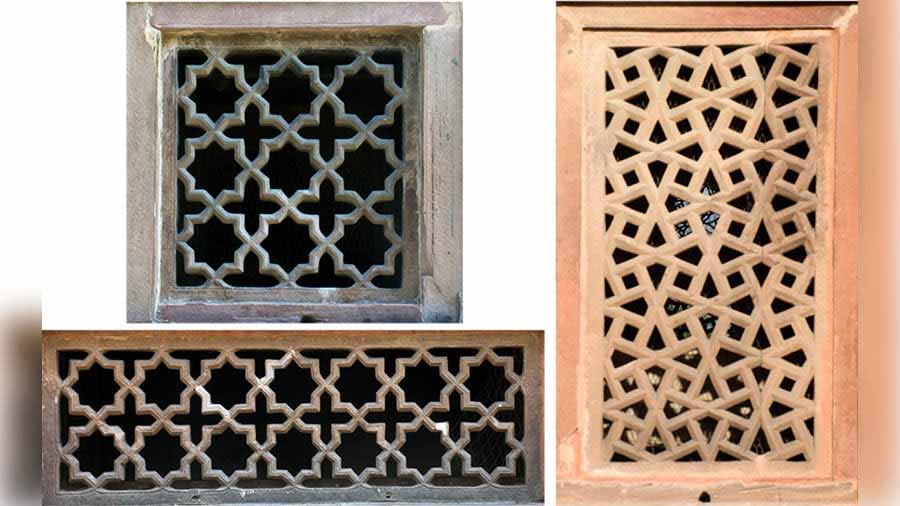
Collage of ornate 'jali' windows from Khusro Bagh
So, the next time you are in Prayagraj, spare a couple of hours to witness one of the most unique and beautiful Mughal tombs of the country.
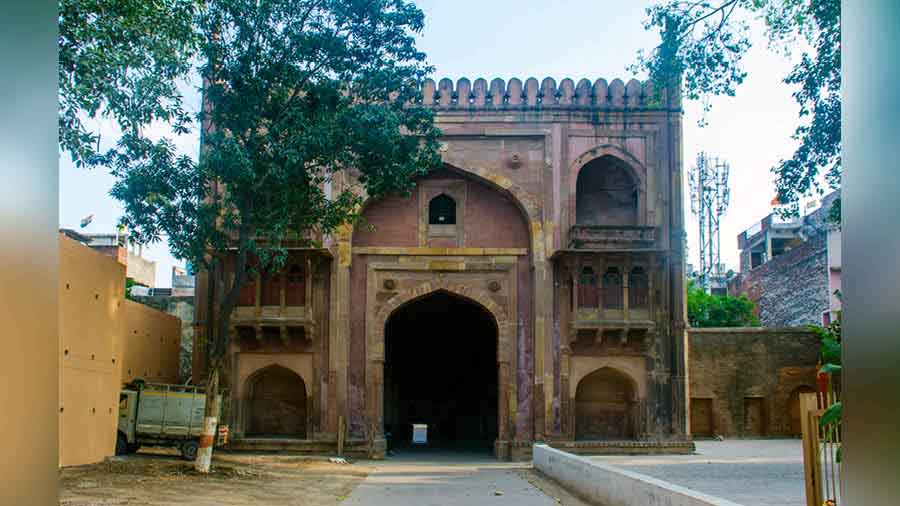
The southern gateway from inside Khusro Bagh
Travel Information:
- Time: 6am – 7pm
- Entry fee: Free
- Photography: Allowed
- Entry inside the tombs is not allowed
